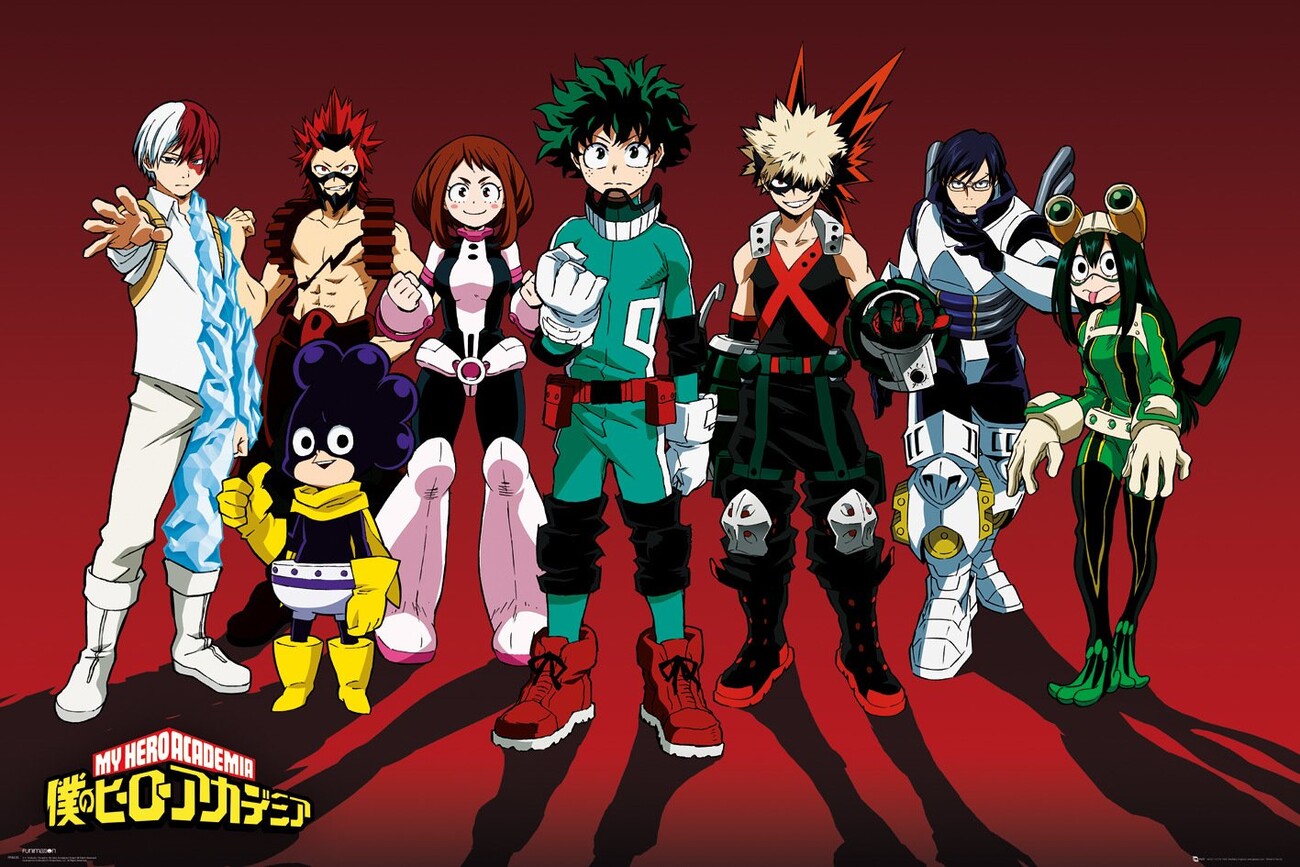Table of Contents Show
There has been a sudden boom in manga and anime popularity in the USA (( Jozuka, Emiko. “Japanese Anime: From ‘Disney of the East’ to a Global Industry Worth Billions.” CNN, Cable News Network, 29 July 2019 )). Anime has been extremely popular over the years, but lately, anime has begun seeping into normie culture. This rise of anime is because there is a limitless selection of anime to choose from. There are many highly developed stories, characters, and fantasy worlds (see the popular anime One Piece (( “One Piece Wiki.” Fandom )), which to date has over nine hundred episodes out). With all of the stress and the want of many to take a break from the more harsh realities of the past two years, it is no wonder that anime is becoming more and more of a medium for American audiences to lose themselves in. One of the “newer” animes is My Hero Academia, MHA (based on the manga of the same name written by Kohei Horikoshi).
Although many watch Shonen for the beautifully animated action-packed sequences and the incredible worlds the characters inhabit, what is so compelling specifically about MHA is how it subtly teaches its audience important lessons about self-love and self-worth. It also shows important examples of kindness, respect, and acceptance of others – not only through the highly pure Izuku Midoriya but also through the other characters and their interactions.
My Hero Academia‘s Illustrations Of Self-Love
It first aired in 2016 and is a beloved Shonen anime that represents the Shonen category while managing to subvert some of its more negative traditional aspects (Shonen meaning young boy or kid in Japanese). MHA follows the story of a young boy named Izuku Midoriya in a futuristic world where eighty percent of the population is born with “quirks” (another name for superpowers), leaving the minority of people completely powerless.
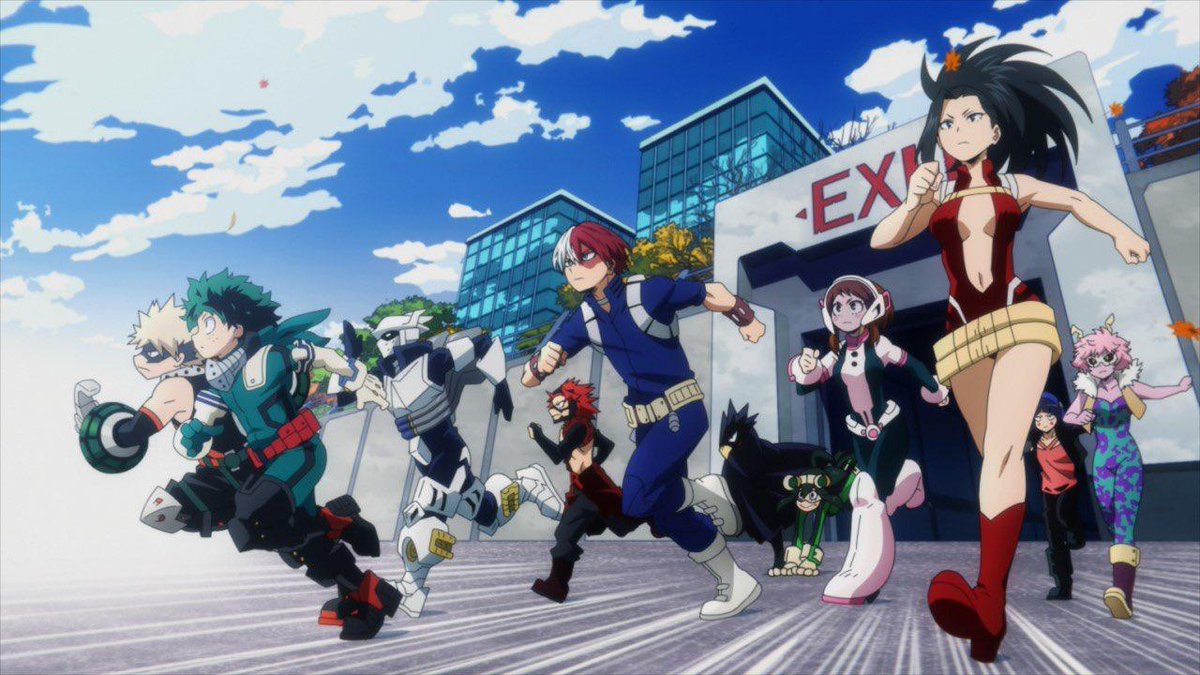
One of these powerless few is Midoriya, who intensely idolizes Japan’s number one hero, “All Might,” and wants to be a hero one day as well. In this society, being a hero is a profession, one within the confines of the law and bureaucracy. To become a hero, one has to attend a hero academy, and very few make the cut. On the day that Midoriya finally gives up hope on becoming a hero (since he is quirk-less and therefore could never get into a hero academy), he has a run-in with his idol All Might and his life is changed.
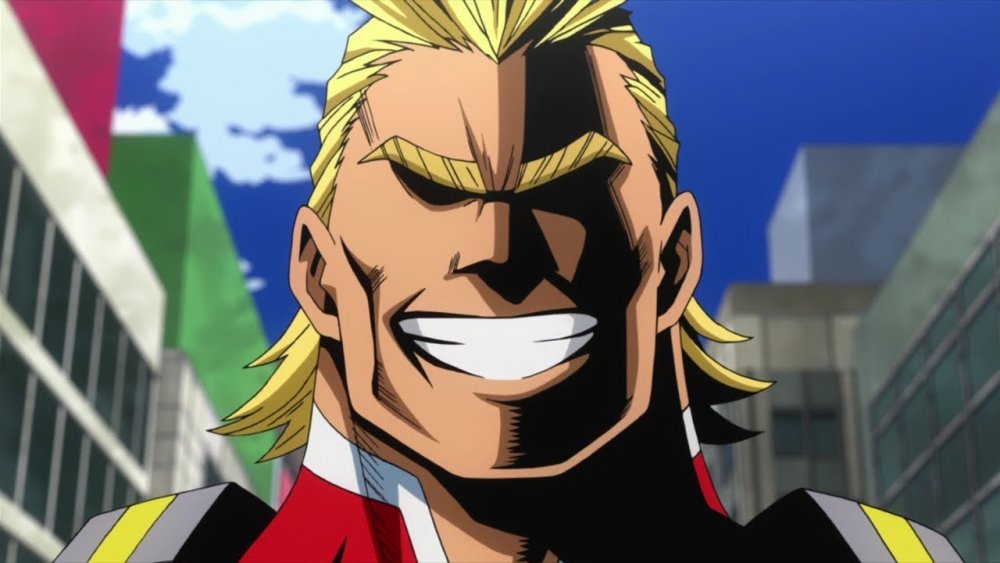
Although the story starts with Midoriya as the primary focus (and he continues to be so throughout the seasons), there is ample time spent developing the other characters. From side adventures to short vignettes (this is not even considering the manga), the story is full of lovable characters with weird personalities and fantastic development over the seasons – currently airing season five. There are a few standout favorites of the show, like Katsuki Bakugo. He is a powerful teen with anger issues and much-unfounded resentment towards Midoriya, his childhood ‘frenemy.’ Or, Shoto Todorki, the son of the “number two hero” Endeavour, who has a dark backstory and is hilariously awkward. The list goes on and on, and each character’s unique nature, both in looks and in personality, is what ultimately makes this a standout Shonen anime.
Izuku Midoriya Believes In Everyone
Izuku Midoriya believes in everyone, to an extreme (some would say, to a fault). He never gives up on Bakugo, even after Bakugo beats him up repeatedly, and in fact, he uses any frustration or anger he has to inspire himself to work harder. Every time a character is cold to him or dislikes him, he tells them that they inspire him to work harder, be better, be the best. They always end up warming up to him. Watching a show with such a positive, loving, and utterly pure-hearted character like Midoriya can inspire watchers to try and act more like the character they look up to so much. But, on the flip side, it can make them reject the show altogether out of envy or even the unrealistic nature of Midoriya. In a sense, Midoriya is the heart of the watcher.
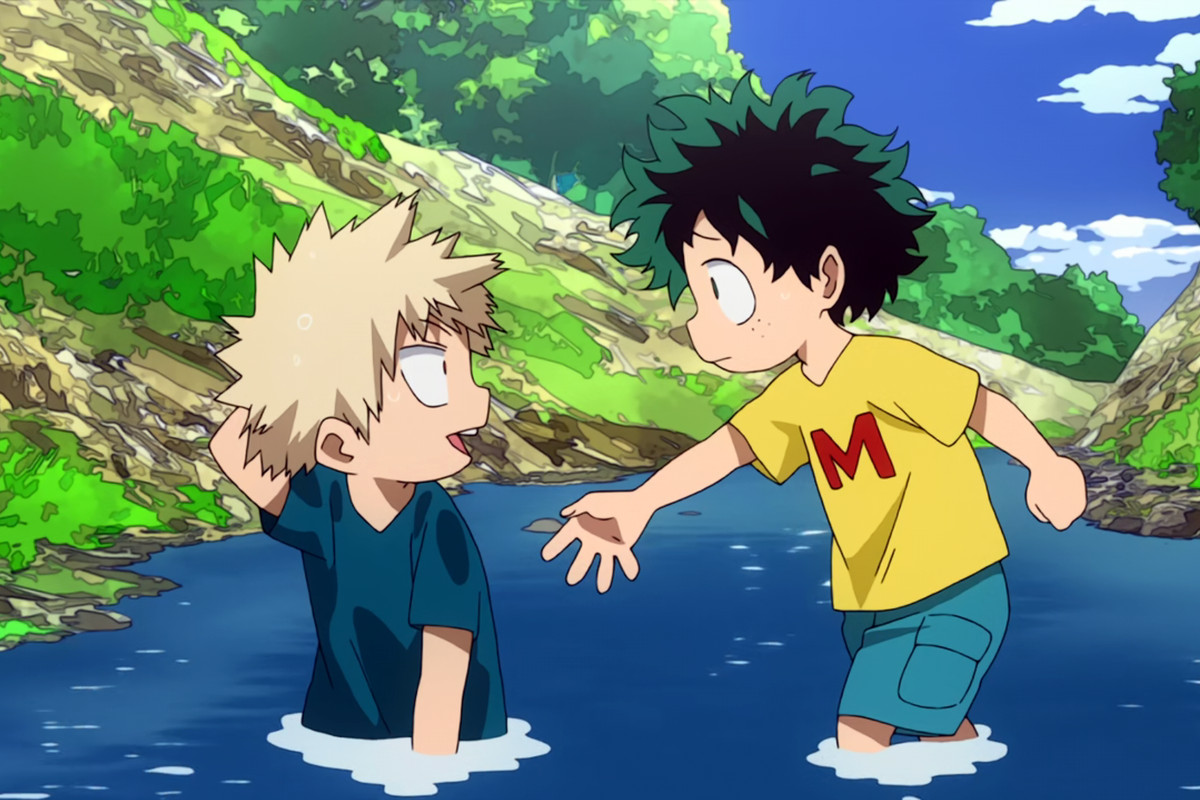
All of the other characters are realistic portrayals of flawed, selfish people who are immoral, stupid, or boorish but still deserve love, attention, care, and respect. Midoriya is here to love the watcher as the watcher learns to love all of the aspects of the wacky characters with characteristics that they may be more critical of in themselves.
The Good, The Bad, The Katsuki Bakugo
Katsuki Bakugo is a character that, as a viewer, one either loves deeply or utterly despises. There has been intense discourse surrounding this character all over the MHA fanbase, but there has never been a full conclusion on Bakugo. That being said, the mixed reactions he evokes are what makes him a brilliant example of self-acceptance and love.
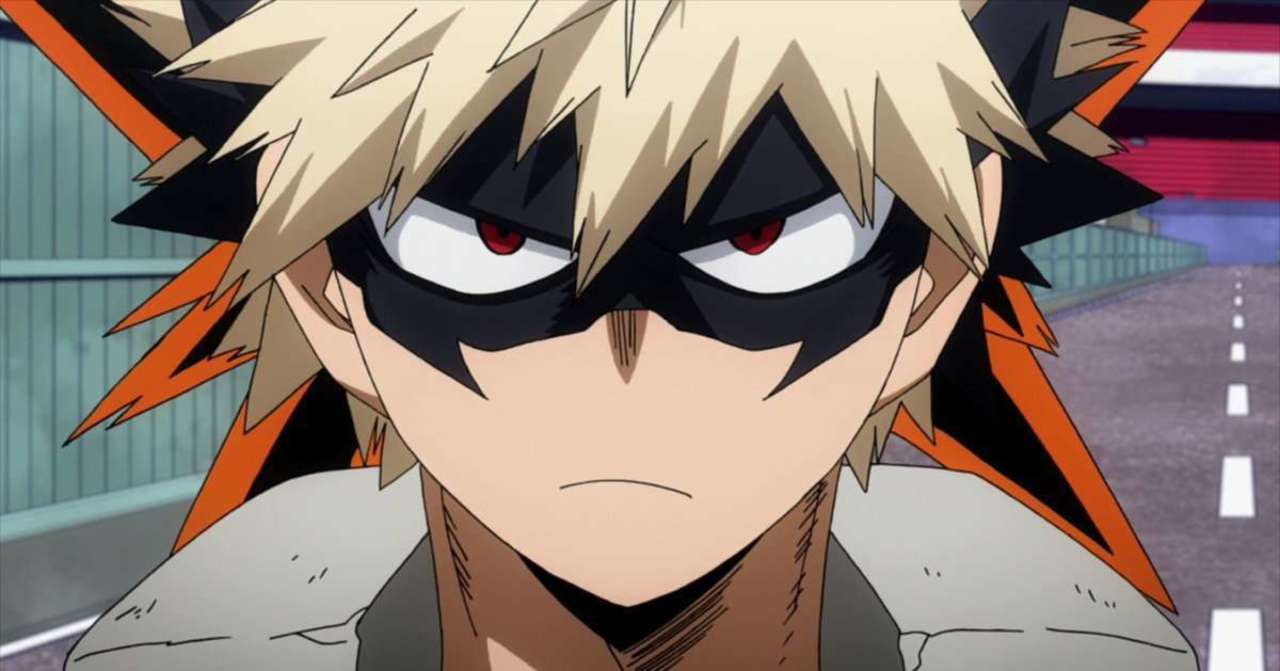
Bakugo’s quirk is essentially “explosions,” which certainly fits his fiery character. At the beginning of the series, before Midoriya attends UA, he bullies Midoriya because Midoriya takes the bullying without complaint, which bugs the immature Bakugo. As both he and Midoriya get into UA, he only becomes more angry and mean and snappy. In the first season, he is a lone wolf, extremely combative with his other classmates, and arrogant beyond belief. Regardless, he somehow has friends and good ones too! In fact, as the season progresses, it becomes evident that all of the students in class 1-A (the main class followed by the story) are all friends and care about each other deeply.

Unlike in Bakugo’s past, at UA, he is not surrounded by other bullies but by the unconditional love of many true, brave future heroes, and they affect him. As the show progresses, Bakugo becomes a better team player, genuinely shows care for his classmates, and even lays off Midoriya more than usual. Nevertheless, he does all of this without losing his wild and fiery nature. What is incredible about this is not that he grows and develops, it is that firstly, he does so without changing who he is, and secondly, there were people to help him from the start. This is where the critical moral of Bakugo comes in: everyone is deserving of love and friendship, everyone.
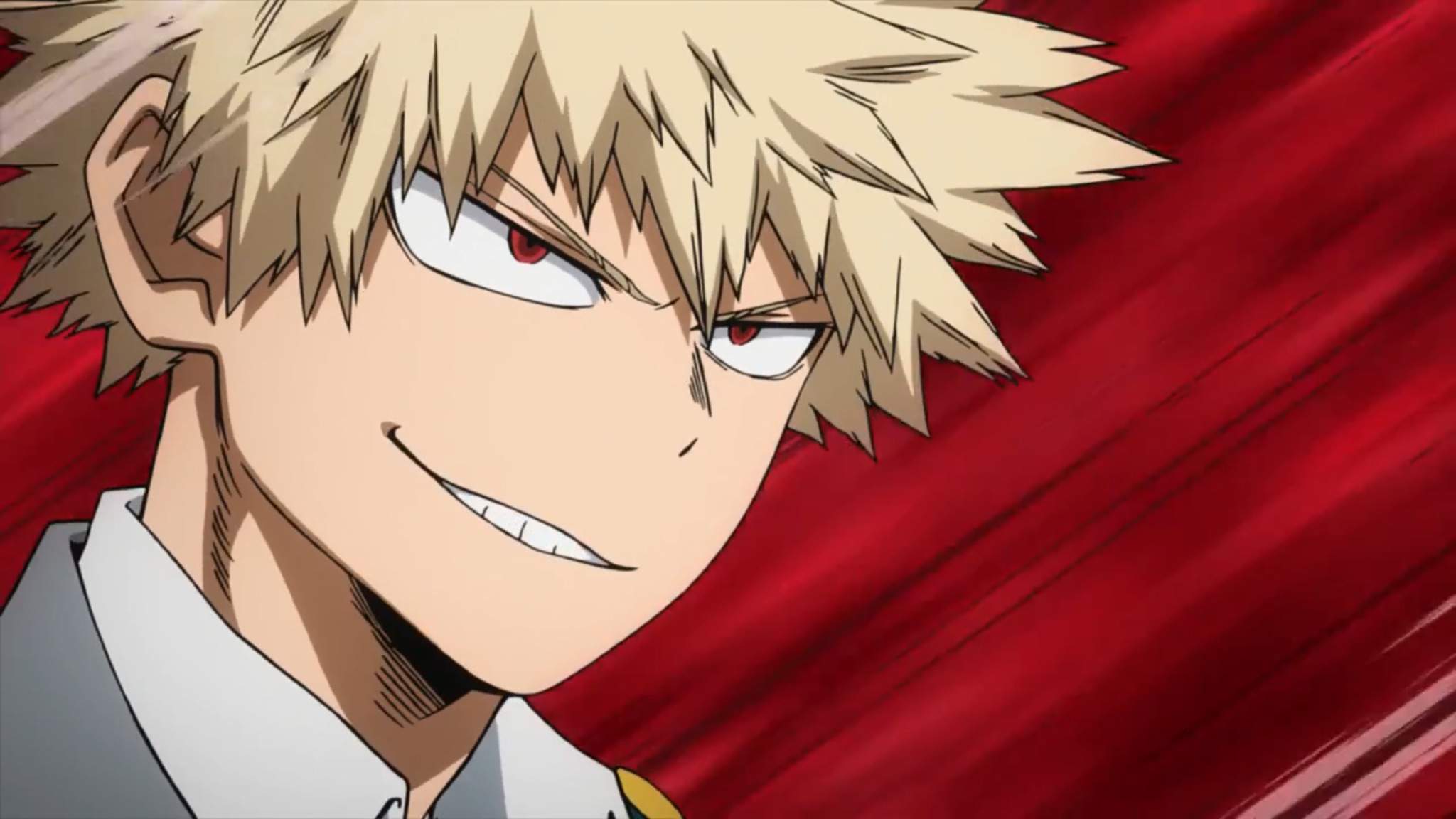
Bakugo is still a kid, so he still has a lot to learn, but even if he is more complicated and communicates in ineffective ways, some people understand him and love him no matter what. Bakugo, the jerk, is lovable and likable because people who can see past his immaturity and facade see his intelligence and drive and his good heart. In one of his first fights, he fights the bubbly Ochcaco Uraraka, her quirk is levitation, and she is one of the less powerful (although intelligent) heroes-in-training. In his fight against her, she holds her own. Although audience members of the fight complain Bakugo is going too hard on her, as his teacher points out, he treats her with respect and seriousness because she is his opponent. He does not care that she is a girl, he knows she is powerful, and he always tries his hardest to win (Bakugo is a feminist, and that is that).
Early on in the show, Bakugo is kidnapped by the League of Villains because they want to recruit him for their team. When this happens, his homeroom teacher Aizawa is questioned during a press conference about the incident. The people are worried that Bakugo will be turned, but Aizawa, who has taught him, watched him grow and work, and seen past his exterior knows his heart is a hero’s heart waves away this concern with zero doubts. Additionally, All Might also increasingly has a fondness for Bakugo that is solidified when Bakugo learns about Midoriya’s secret and becomes in on the absolute truth behind All Might’s powers. Unlike Midoriya, Bakugo is mean and violent; his favorite battle cry during classroom spars is “Die!” yet he also has the same dreams and wants to be a hero.
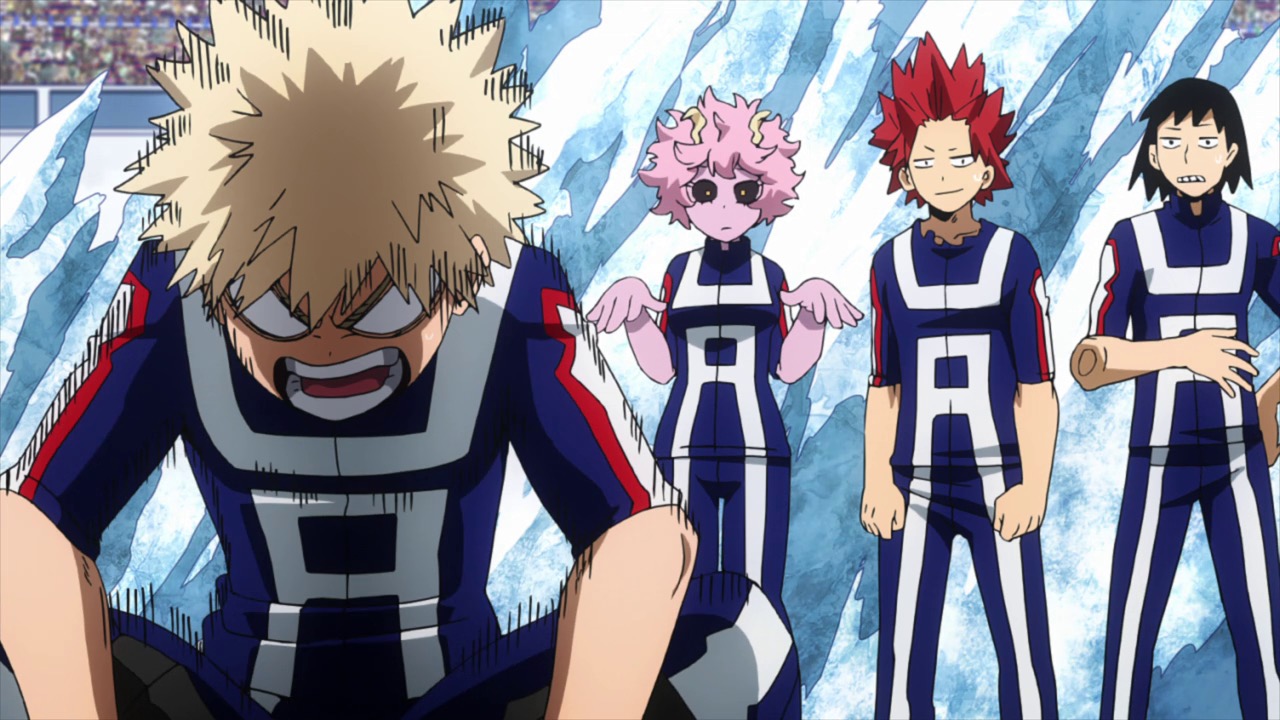
To an audience member, this is a clear example of acceptance and love. Having a character that is not perfect or easily understood, finding people who do like him and take the time to understand him reinforces the idea that this is possible. If Katsuki Bakugo is loved and valued at all stages of his development, anyone can be and should be.
Different Body Types… Literally
In a world full of body dysmorphia, self-hate, racism, sexism, a show full of wacky characters ranging in looks from “normal” human to literal cinder blockheads could have easily ignored this as a stylistic choice and never addressed it. But, instead, the people’s variations are rarely mentioned, except in a short flashback, making all the difference. Midoriya’s power, One for All, is derived from the power of the ultimate big bad of the series, All for One, who can steal, use, and give quirks as he wishes. He is basically immortal and has been around since quirks first became a thing in the world. While in something of a fugue state, Midoriya watches the memories of All for One’s younger brother, who is the original One for All.
‘A scene plays out in which one man begs to have his quirk erased while the other wishes deeply for a quirk. The man with the quirk says his face scares people, and his parents have all but disowned him for it. The man without a quirk is tired of being robbed by those more powerful than him. This dynamic is the only hint that the audience gets regarding how the world first looked when quirks appeared (in the anime, not the manga). Aside from the chaos that ensued from lacking a system for regulating quirks, there was chaos caused by prejudice and judgment. The quirk-based hatred is an obvious metaphor for racism.

Prejudice today is ridiculous enough as is, but imagine how much this would be amplified if people were even more different. There are humans with animal body parts in MHA, humans made out of cinder blocks, some quirks make it so that they have big spikes growing out of their face, or skin made up of something inhuman. This is all while at the same time there are those with quirks who look relatively normal. They all coexist peacefully and with respect for one another. This world is, of course, idealistic, but it is also in a society where quirks have been a thing for generations, and so people have had time to adapt. MHA’s Japan is almost a “post-race” society, where humans differ even more dramatically than they do in real life. However, they all are human, all are valid, and there is hardly ever discrimination against people based on their bodies. For many, how they look results from their power, and their powers are really extraordinary.
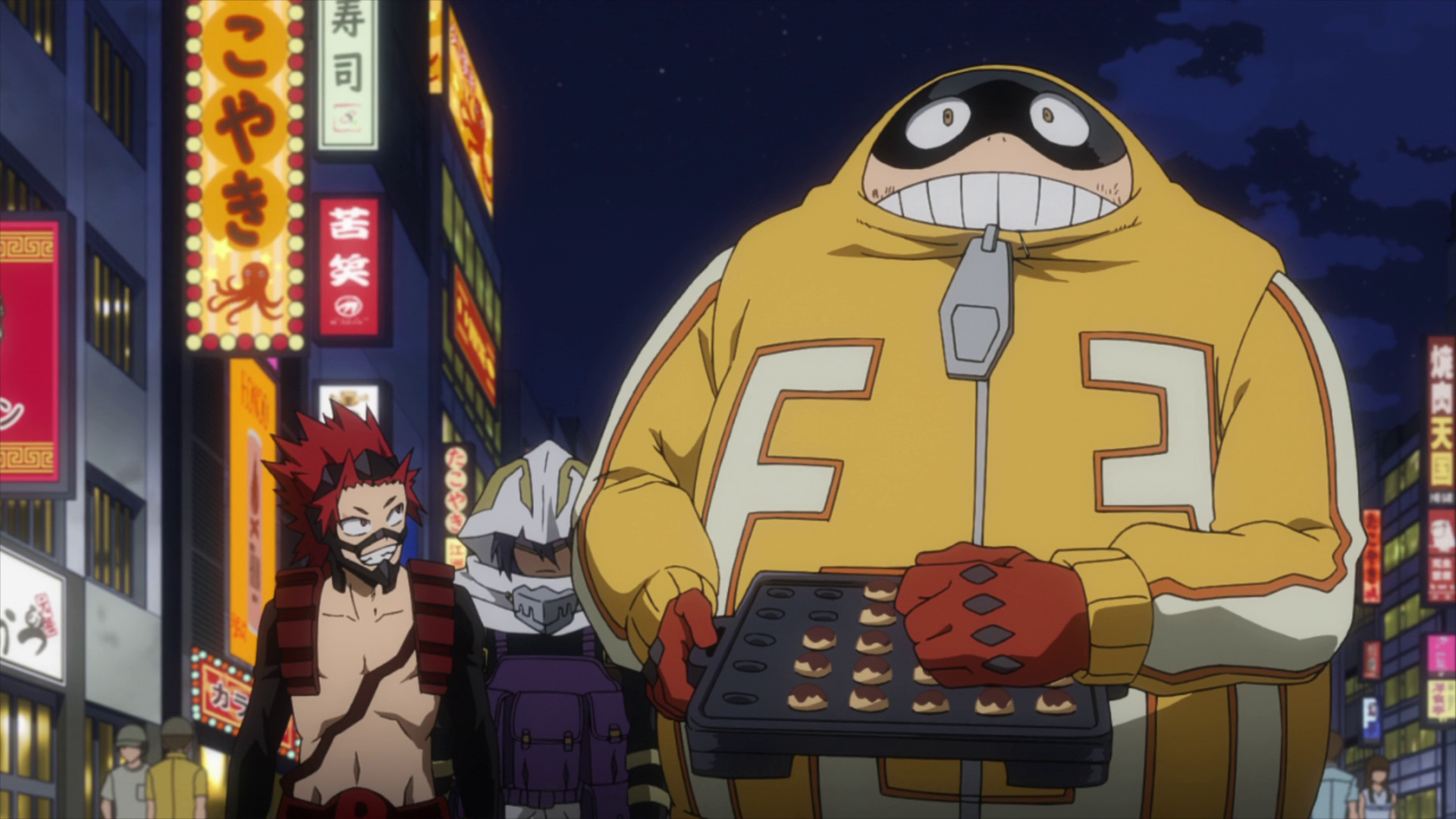
The depiction of body types and how they vary wildly also sends a good message to the audience. There are so many characters with bodies that do not look very human and cannot be comparable to the ridiculous “beauty standards” we hold in our societies today, and these characters are treated normally. A great example of this would be the pro-hero Fatgum. He is constantly eating to get as fat as possible because his fat is bulletproof and extremely effective at the absorption and the grabbing and capturing of villains. When he takes repeated hits, his body stores up the energy, and with a powerful blast, he can send it all back, but in doing so loses his fat and protection.
Fatgum’s name and the fact that his fatness is so prevalent to his heroism is hugely body positive. There tends to be a fatphobic fear of using the word fat in American society because there is a negative societal association. In reality, being fat is not a negative state of being; it just is, and in this case, it is an asset. Fat is a normal human body thing, and MHA’s treatment of this character helps to remove the stigma attached to fatness to a large degree. In this way, MHA takes insecurity and turns it into power, all while reinforcing the idea of self-love. Fatgum loves himself; everyone loves Fatgum because he is a kick-ass superhero. Being fat is not negative; being fat does not make one unworthy.
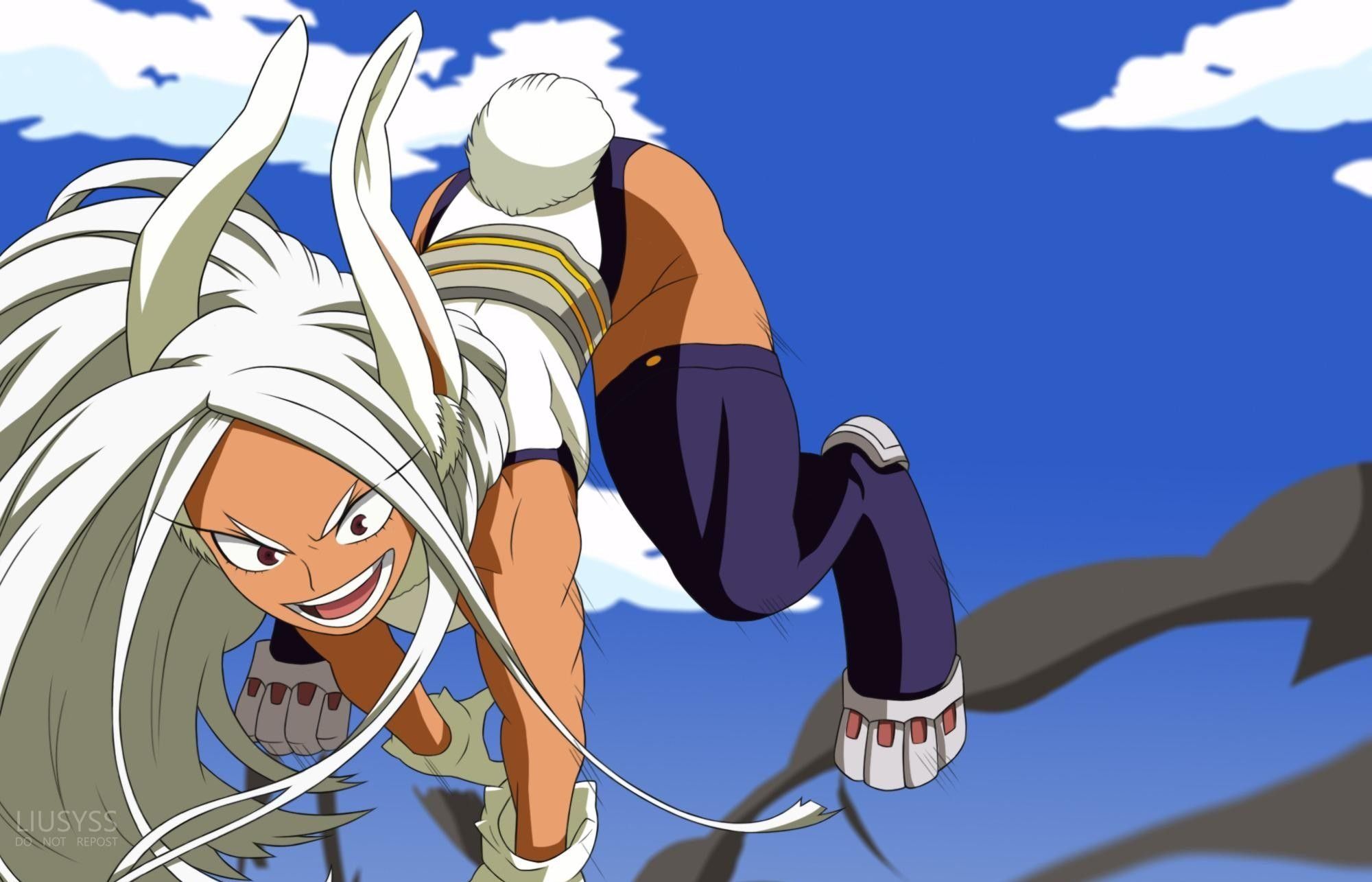
For villains, the body is a means of destruction and chaos. For heroes, their bodies are meant to save, serve and protect. It would be ridiculous for the Rabbit Hero: Mirko (a fan favorite) to be saving a child from a burning building and then get self-conscious of how ripped her arms are. Our society teaches body hate, body harm, and the need to conform to certain ideals. However, in a society that has been full of so many variations of unique looking and superpowered humans for generations, it would be almost impossible to try and chose the “right body type.”
Nudity Is Normal And Needed
As mentioned previously, MHA manages to evade falling into the familiar Shonen anime tropes of objectifying girls and women and being a little pervy. The show has a running meta-commentary on the pervy nature of so many anime by having one of the most despised characters around, Minoru Mineta, a class 1A student who is a super perve constantly being chastised by the girls and guys for it. There are male characters drooling over curvaceous female bodies, but it is not rampant or essential to the storyline. In fact, sex and sexuality are not seen as necessities for all of the characters but tools, and in this way, MHA helps to combat the shame that many feel around the naked human form. In many societies, including Japan and America, the female body is oversexualized and objectified, while simultaneously, women and girls who explore their sexuality are chastised for it. MHA points out that naked bodies are normal, and sex and sexuality do not define a woman.
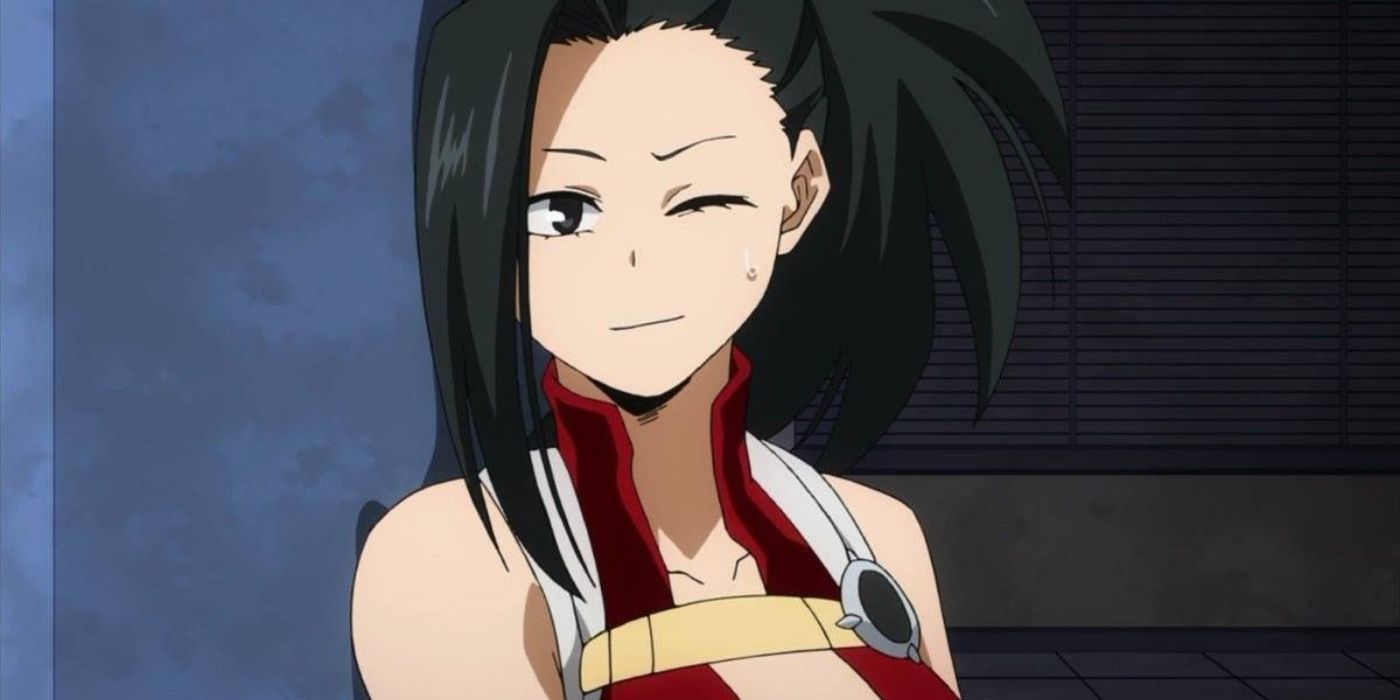
A great example is Momo Yaoyorozu, another Class 1A favorite whose quirk is creation. She uses the lipids in her body to create any object she understands the structure of, and she pulls the objects right out of her body. The virtue of her power means she needs easy access to her skin. Unlike Midnight who, in addition to needing to be somewhat naked to use her powers, also uses seduction to her advantage, Yaoyoruzu is entirely sexless. Again, people fetishize her because so much of her cleavage is shown in her costume. However, if one watches the show, they would realize that not only is sex not at all on her mind, but to her, it is all practicality. Nudity does not need to be inherently sexualized, and neither do young women’s bodies (in fact, they should not be). In this way, MHA does an excellent job of conveying that women are more than their sexuality and bodies and that their bodies are tools for them to use, not just for men.
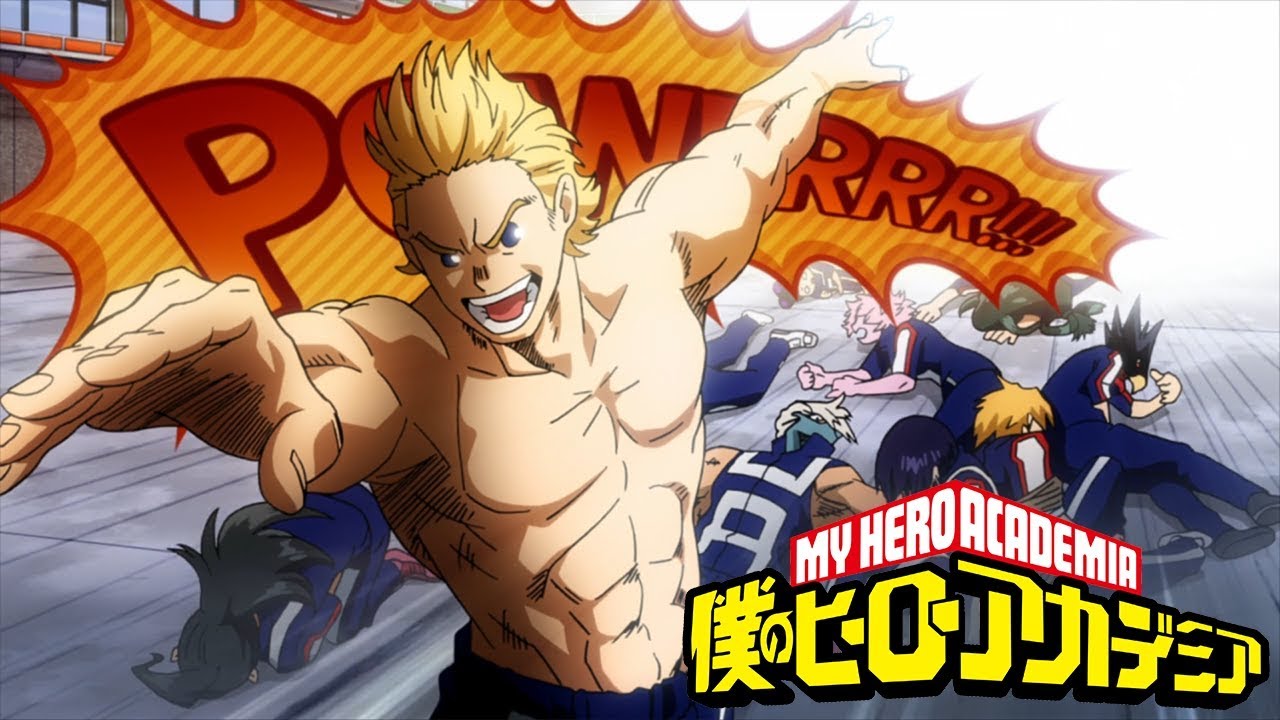
Another great example of body-positive nudity in MHA is the side effects of Mirio Togata’s quirk. Togata is a third-year at UA Academy and is widely loved. His quirk is permeation. He can make his body wholly permeable and can move through anything; consequently, whenever he uses his quirk and is not in his specially made suit, all of his clothes fall off, and he fights completely naked. When he first shows his quirk to the 1A class as he fights them to test their abilities, they all are shocked and blush at his naked body, which he uses to his advantage. He does apologize for being nude, but he seems completely comfortable with it, and so do his friends who are used to it. In this way, Mirio is an excellent example of self-love and nude body positivity. He uses the others’ shame about nudity to his advantage and easily beats them all in a fight because he knows nudity comes with his power and is nothing to be ashamed of. Thus, MHA again displays an example of self-love and body positivity in a nude yet nonsexual environment.
Villainy & Mental Health
Villains in MHA are unique, and almost every single one is a metaphorical representation of a mental illness, making almost every villain sympathetic and complex. It is fitting that the villains seem to be the most unstable of the society since society often is too quick to cast aside and forget children who are mentally ill and unstable. Not only that, but many of the villains are simply by-products of an uncaring and judgmental society. Although many heroes “look like villains,” and many villains have the quirks that one would expect a hero to have, many characters still make jokes about someone looking, acting, or having the quirk of a villain. An example of this would be Shinso, a UA student who wants to be a hero but has a mind control quirk, something more often seen in villainy. The leading villain group, “The League of Villains,”(( “League of Villains: My Hero Academia Wiki.” Fandom. )) is a group that many fans have learned to love and somewhat understand (although not condoning their actions).
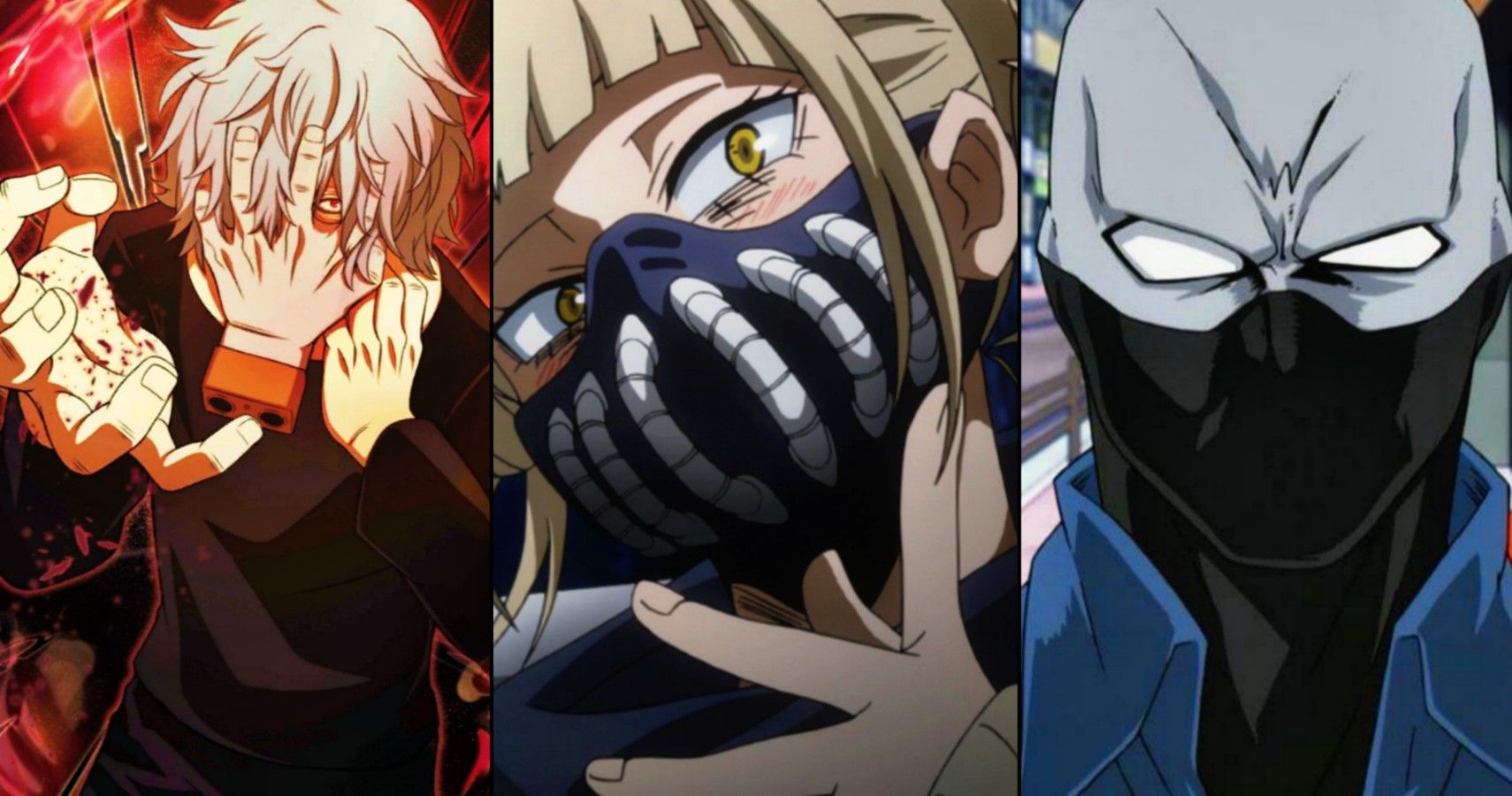
The leader Tomura Shigaraki (quirk: decay) was abandoned as a child and was raised by All for One, who groomed him to be his successor. Shigaraki is shown to have a nervous tick throughout the show, where he self-harms by scratching himself when anxious. He also has severe issues with his self-worth and turns to villainy because he wants to be known. A fan favorite is Himiko Toga, a young girl with the power to turn into anyone she tastes the blood of, who seems to be a masochist. Because of her quirk and how she was raised, she never properly learned how to show affection and was ostracized for her compulsions (instead of being met with understanding and help). She often talks about stabbing those she loves (she confuses violence and love).
The list goes on and on of villains with different mental illnesses. Some of them are “evil” and went into villainy because they had their own agendas (although it can be argued that that is a form of mental illness itself). Many of them are just societal rejects — people struggling with their mental health and have no one to turn to. They are down on their luck and want to have meaning in their lives, and in a society that vilifies them simply for being mentally ill, villainy starts to look like more of a viable option. When an established villain turns to them and gives them a new purpose, of course, they will go for it and devote their life to villainy. Thus, the League of Villains was born, a group of unloved, lost, broken, sociopathic, and narcissistic misfits. All of this is not to equate villainy with those struggling with mental illness but to show that mental illness is not stigmatized or “other” in our society (as it so often is). All of the villains of the league have sad backstories; a lot of them were just kids who didn’t “fit in” and weren’t given the love, patience, or opportunity to learn how.
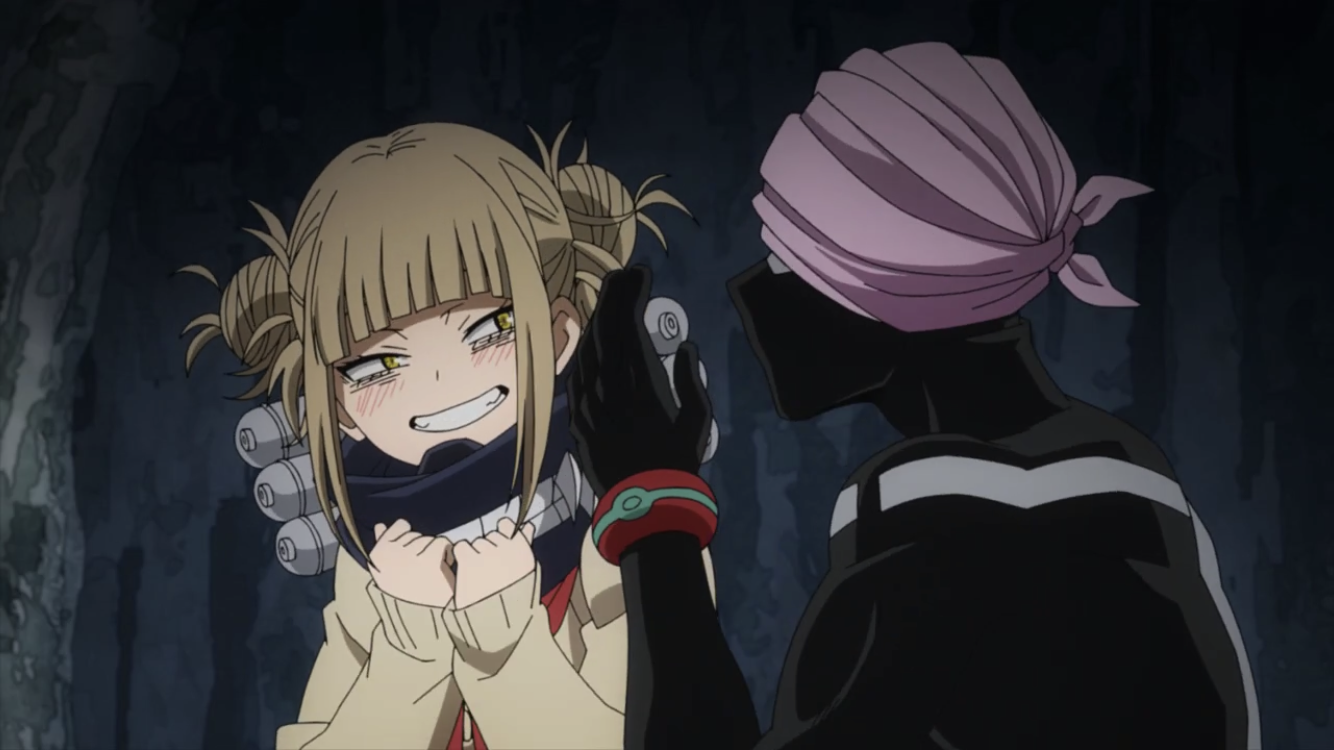
Other characters like Midoriya or Yaoyorozu do exhibit symptoms of anxiety, but none of them show narcissism, masochism, or in the case of the villain Twice, bi-polar mental health issues. Where this show is successful in promoting positive communication around mental illness is in the love that the villains have, in their communication and their growth. Yes, they are doing bad things, but again, deep down, they were just kids struggling with various mental health issues which were misunderstood. As an audience member of MHA, one can’t help feeling like it isn’t the villains who are actually the “bad guys,” but the establishment that made them. This is a sentiment repeated over and over again by the villains, and it is very applicable societies current treatment of what norms deem “not normal” behavior, thoughts, or feelings (all of which are subjective).

In the scenes where the league members interact with one another, whether they are plotting, fighting, or just casually conversing, it is clear that they have a strong bond with one another. They are all a little off, but there are more than a few times when a villain in MHA has told one of its partners that they love them. In a perfect world, these people would have gotten the love that everyone deserves as children, and if they did not, they would be found and helped as adults. Unfortunately, it is not a perfect world, and so, as a result: villains. Even though what they are doing is wrong, it is hard not to feel sympathy, empathy even for the League of Villains who care so much for one another. They love each other because, again, everyone is deserving of love. Through its villains, MHA shows that not only is everyone deserving of love, but everyone can love (and that, however, assisted, all forms of love are valid). If a wholly twisted sociopathic villain can find a family, so can anyone.
Love Yourself; You Are Worth It!
From villainous relations to “irregular body types” to the total erasure of “an ideal body type,” MHA is an anime that exhibits all sorts of healthy self-love behaviors that are worth emulation. In a society like ours, full of self-doubt in our looks, personalities, and even our ethnicities, seeing such positive examples of self-acceptance is vital in the media we consume and should continue to be the trend in future anime. To love the characters of My Hero Academia is to love oneself, as they are imperfect, odd, sometimes sociopathic, or very nude, yet they are all worthy of love, as any and every person is, love from others; love from themselves.
